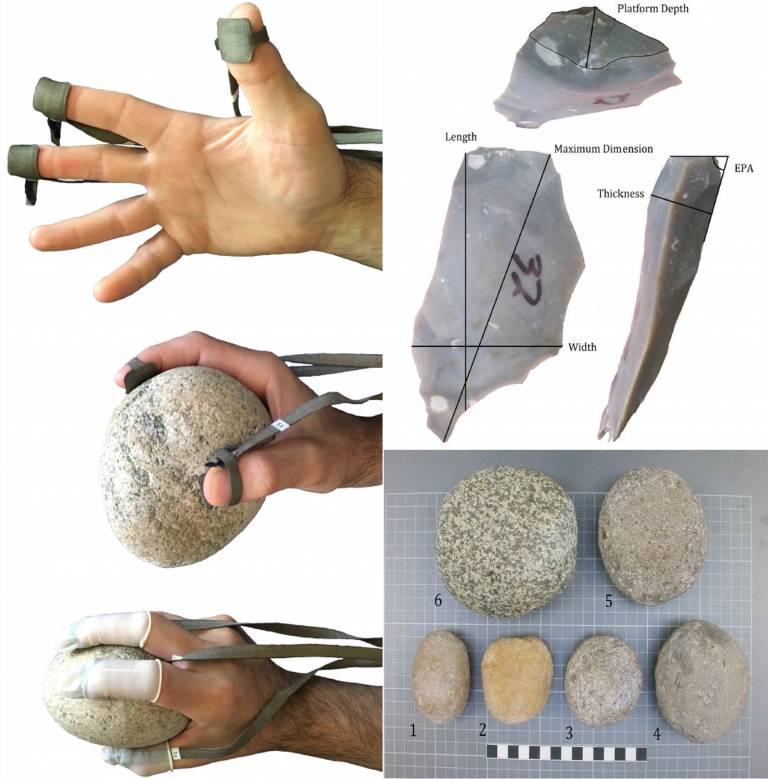Experimental archaeological research shows a more powerful grip was employed to detached large stone tool flakes
25 January 2017
Relative to the hominin fossil record there is an abundance of lithic artefacts within Pleistocene sequences.
 Therefore, stone tools offer an important source of information regarding hominin behaviour and evolution. Here we report on the potential of Oldowan and Acheulean flake artefacts to provide a record of the biomechanical demands placed on the hominin hand during Lower Palaeolithic stone tool production sequences. Specifically, we examine whether the morphometric attributes of stone flakes, removed via hard hammer percussion, preserve correlates of the pressures experienced across the dominant hand of knappers. Results show that although significant and positive relationships exist between flake metrics and manual pressure, these relationships vary significantly between subjects. Indeed, we identify two biomechanically distinct strategies employed by knappers; those that alter their hammerstone grip pressure in relation to flake size and mass and those who consistently exert relatively high manual pressures. All individuals experience relatively high gripping pressure when detaching particularly large flakes. Amongst other results, our data indicate that the distinctive large flake technology associated with the Acheulean techno-complex may be demonstrative of an ability to withstand, and by extension, to exert higher manual pressures. However inferences from smaller flake artefacts, especially, must be treated with caution due to the variable biomechanical strategies employed.
Therefore, stone tools offer an important source of information regarding hominin behaviour and evolution. Here we report on the potential of Oldowan and Acheulean flake artefacts to provide a record of the biomechanical demands placed on the hominin hand during Lower Palaeolithic stone tool production sequences. Specifically, we examine whether the morphometric attributes of stone flakes, removed via hard hammer percussion, preserve correlates of the pressures experienced across the dominant hand of knappers. Results show that although significant and positive relationships exist between flake metrics and manual pressure, these relationships vary significantly between subjects. Indeed, we identify two biomechanically distinct strategies employed by knappers; those that alter their hammerstone grip pressure in relation to flake size and mass and those who consistently exert relatively high manual pressures. All individuals experience relatively high gripping pressure when detaching particularly large flakes. Amongst other results, our data indicate that the distinctive large flake technology associated with the Acheulean techno-complex may be demonstrative of an ability to withstand, and by extension, to exert higher manual pressures. However inferences from smaller flake artefacts, especially, must be treated with caution due to the variable biomechanical strategies employed.Flake morphology as a record of manual pressure during stone tool production
Alastair Key Christopher J. Dunmore, Kevin G. Hatala, c, Erin Marie Williams-Hatala
DOI: 10.1016/j.jasrep.2017.01.023
 Close
Close

